The Liga 2 promotion race is almost over. This Sunday, second-placed Sepsi OSK Sfântu Gheorghe are away at struggling CSM Metalul Reșița, where a point will guarantee a place in the top tier for the first time in their short history. (The fact that the game will take place in Ghermănești, a seven-hour drive and 550 km away from Reșița itself, is incidental and merely indicative of the malaise in which this country’s football finds itself. See this blog passim, if you’re not easily depressed by things like this.) This is terrific news because it allows me to shoehorn some undercooked socio-political material into this post.
Sepsi’s rivals for second place, UTA Bătrâna Doamnă, slipped up big time during their midweek game, following up a good win away at Timișoara by losing at home to mid-table Balotești, who should have had nothing to play for. The “Old Lady” of Arad now has only one game left to play, while Sepsi have two remaining fixtures in which to find one solitary point and condemn the Aradeans to a tough play-off with the third-bottom Liga 1 club.
People and place
Sfântu Gheorghe (Sepsiszentgyörgy in Hungarian; St. George in English) is a town of around 50,000 inhabitants in Covasna county, not far north of Brașov. The area, along with neighbouring Harghita and Mureș counties, is notable as the biggest concentration of ethnic Hungarians in Romania: roughly three quarters of the county’s population identify as Hungarian. The people here are known in their own language as Székelys (Secui in Romanian / Szekler in German), a group of Hungarians which has lived in these foothills of the Carpathians for many centuries and developed a distinct identity. They were, supposedly, originally border guards against the Turks and Russians, under first the medieval Hungarian kings and then the Habsburgs, were given special privileges under Magyar rule, and are today considered slightly “other” by other Hungarians. They formed an island of Hungarian speakers even when Transylvania was ruled from Budapest, and that island is even more isolated now after almost a hundred years under Romanian control. In the map below, which shows Hungary’s territory in 1890, the Székely land is the most easterly patch of dark red:
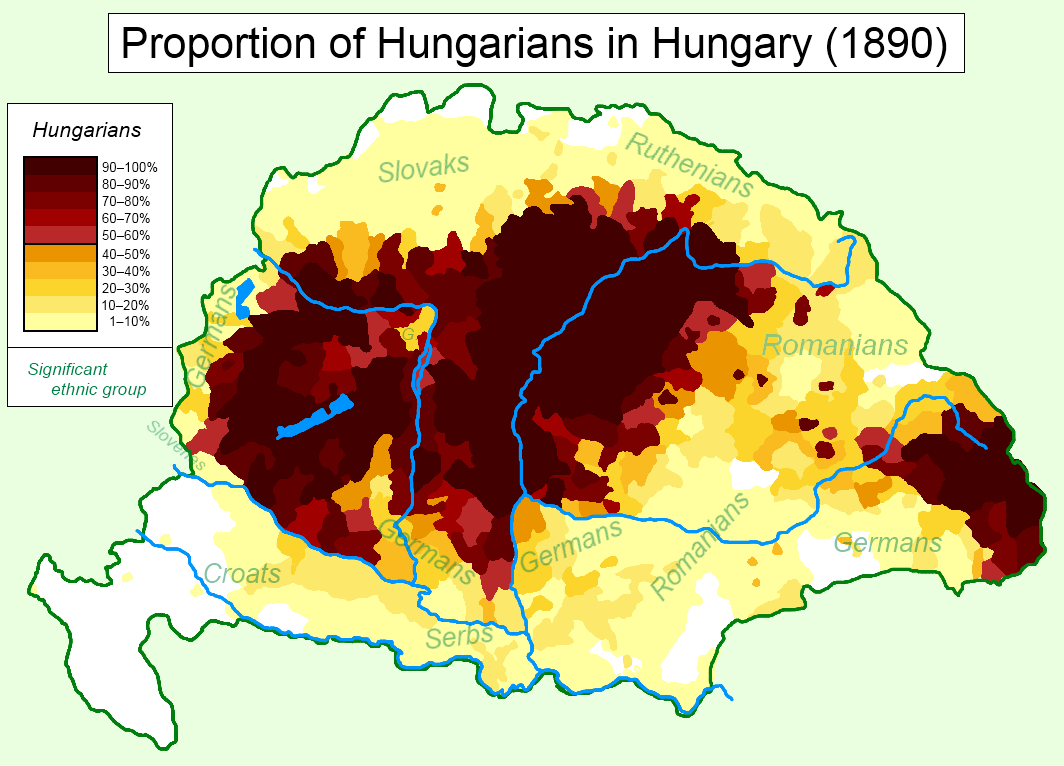
The football club
Sepsi OSK was founded in 2011. It now looks very likely that they will secure a fourth promotion in their sixth season of existence, a remarkable achievement for a small club from a small town in deepest ice-hockey territory. The club is owned by a local businessman, László Diószegi, who runs a chain of award-winning bakeries in the area. Supported to the tune of €150,000 this year by the municipal and county councils, the huge increase in TV money (probably from about €17,000 to about €1.2 million) will hopefully be used prudently to ensure that they do not meet with the same fate as many other small provincial sides which have rocketed up the divisions and, one relegation later, disappeared for ever. Viitorul’s success can tell us many things, and to my mind one of the most appealing is that you don’t need to pay enormous wages to get on, even at the top level: the title-winning captain Romario Benzar is on €6,000 a month and the rest of Hagi’s squad earn around half that. Although I imagine they are enjoying some bonuses right now.
The Sepsi team will, however, need re-engineering in preparation for the step up. For one thing, their top scorer (27 in 27 so far), local lad Attila Hadnagy, incidentally one of the few ethnic Hungarians in the squad, is also one of the few players with significant top-tier experience. However, he is 36 – two weeks older than the coach, Valentin Suciu. And although it’s perfectly possible that young goalkeeper Roland Niczuly is otherwise excellent, take a look at this ridiculous own goal, against Foresta Suceava’s makeshift team a few weeks ago.

Because my interest in Romanian football is to some extent driven by a fascination with the early history of the game here, which is inextricably linked with the Hungarian issue, I was initially very excited at the potential ascent of this club into the top tier. Then I realised that Sepsi are not even the highest-placed team from the Székely land: that honour belongs, for now, to ASA Târgu Mureș, although the pair will swap divisions next season. But I am pretty sure that they will be the first side from a majority-Hungarian town to compete in Liga 1 since… well, since just before Târgu Mureș stopped being majority-Hungarian, in the early 1990s. The earlier incarnation of ASA Târgu Mureș even managed a runners-up spot in 1973-74, and went on UEFA Cup jollies for three consecutive seasons after that. If we go back further, CA Oradea won the league in 1948-49, when Oradea (in western Transylvania, 15km from Hungary) was still mostly Magyar.
But we can over-egg this pudding. Sepsi is not a team of ethnic Hungarians: Hadnagy is one of a handful in the squad. It just happens that the club is located in a predominantly Hungarian area, and thus its fanbase usually speaks Hungarian. The idiotic chants of “afară, afară, cu ungurii din țară” (more or less “Hungarians out”) are as inevitable as the outrage if / when the national anthem is played before a match and ethnic Hungarian fans or players don’t sing along: I’ve witnessed it myself when Sepsi came to Juventus. This is not the time or place to discuss the minorities question, but suffice it to say that my own belief is in celebrating diversity and shunning nationalism. Now, I have to admit that I don’t know what the Sepsi fans were chanting, because I don’t know Hungarian. 😉
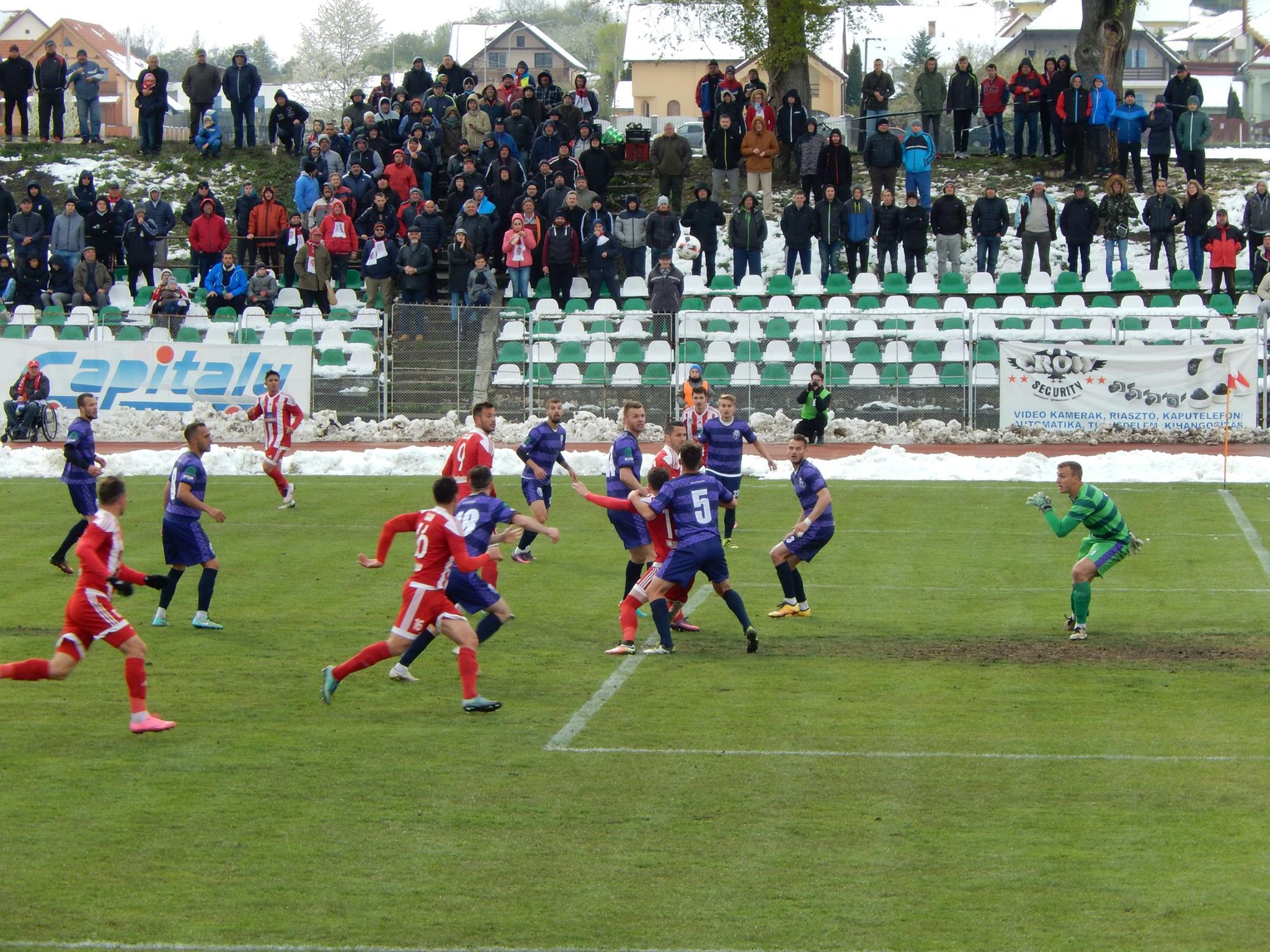
Third division round-up
Sepsi OSK Sfântu Gheorghe’s Székely neighbours, the similarly difficult to enunciate but equally bilingual FK Csíkszereda Miercurea Ciuc, narrowly missed out on promotion from Liga 3 on Friday night. The club has a deal with the Puskás Akadémia in Felcsút, Hungary – not coincidentally the hometown of football-crazy PM Viktor Orbán – to run a Székely Land Football Academy. Financed jointly by the local council and the Hungarian government, the idea is that the products can move on either to the local Futball Klub or to Felcsút. I’m not saying it’s an exclusively Magyar enterprise, but if you can find a word of Romanian on the academy’s website you’re brighter than me. But I digress…
Ripensia Timișoara secured their promotion to Liga 2, however, with a 4-0 thrashing of Pandurii’s B-team. This is the re-founded version of the four-times champion from the 1930s, Romania’s first professional club. So another admirable fan-owned phoenix club climbs the pyramid, to join their neighbours SS Poli Timișoara and UTA (if they don’t go up to Liga 1).
Youth teams round-up
FK Csíkszereda Miercurea Ciuc’s juniors were, also yesterday, in the final of the Romania Under-17 Cup. They lost to Dinamo Bucharest at Voluntari’s stadium.
Other news
Yes, OK, I’ve been trying to avoid it, but the Romanian Cup final is tonight (Saturday). If you must know, it will be contested by Astra Giurgiu and FC Voluntari, two teams with a combined average home attendance of 3,000. It will take place in Ploiesti, which does have the potential advantage of being the city where Astra used to play, for 91 years, before they were taken over and moved 140 km away in 2012. So there might just be the odd fan left behind who will relish this encounter.
Astra, league champions last season, still have some very good players: Constantin Budescu is capable of incredible goals – he scored this one in the semi-final. And, to add a sentimental touch, the captains, Cristi Săpunaru and Vasile Maftei, were team-mates a decade ago in Rapid Bucharest’s run to the UEFA Cup quarter-finals (*sniff*). By my reckoning, though, it must be the least eagerly anticipated cup final since 1973, when the finalists were second-division Chimia Râmnicu Vâlcea and third-division Constructorul Galați. The occasion went down in history as the “Paupers’ Final”. But still eight thousand souls turned up in Bucharest for it. I’ll be impressed if this year’s edition attracts that many. As a footnote, the game will be refereed by Istvan Kovacs, who was the target the last time I heard anti-Hungarian chanting at a football match. How’s that for a nice way of tying up an article? What a pro.
UPDATE 28/05/17:
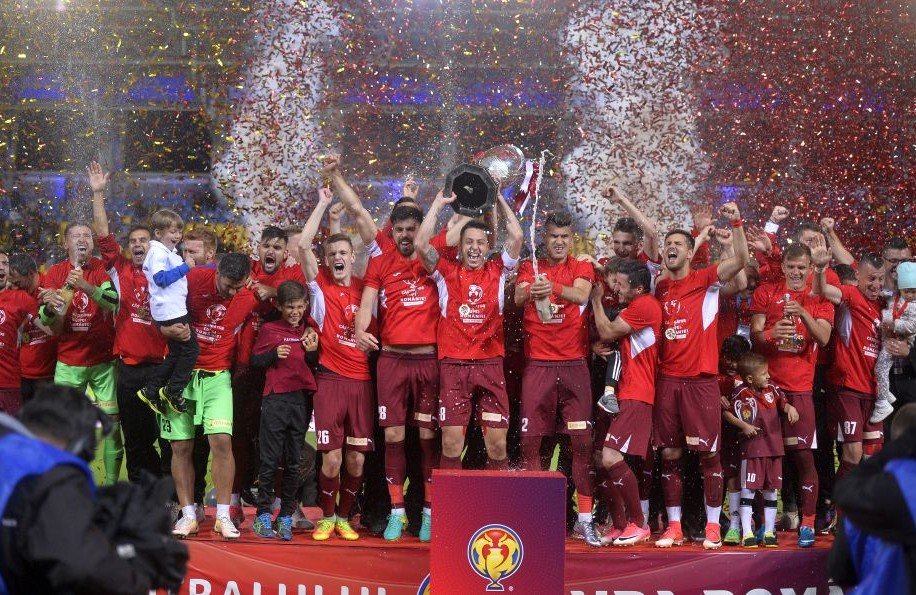
Voluntari celebrate their first major trophy. [Source: gsp.ro]
Voluntari won the Cup Final on penalties, surprising the people who had already attached the plaque to the trophy saying “Winners 2016-17: Astra”.
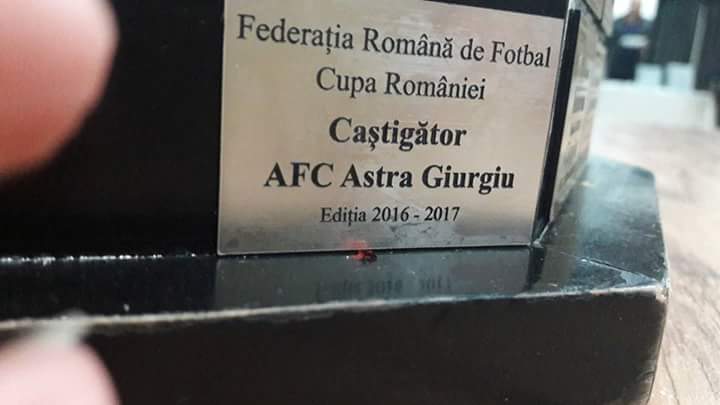
Plus: Sepsi won 1-0 (88th minute penalty) and sealed promotion.
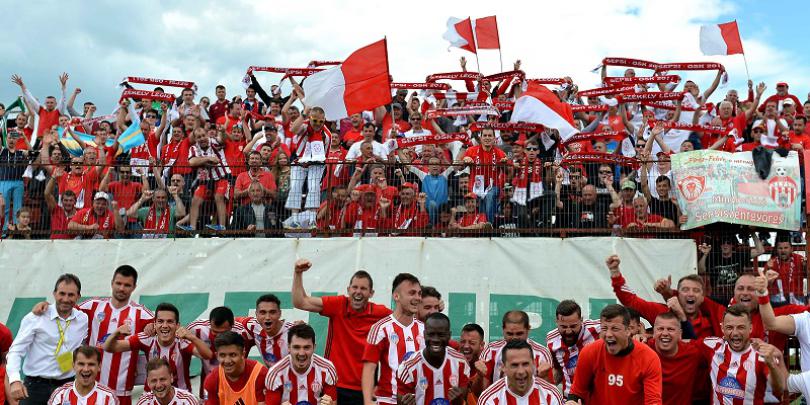

![Tört_Székelyföld Location of Szekely land in Romania. [Source: Wikipedia]](https://romaniaballs.files.wordpress.com/2017/05/tc3b6rt_szc3a9kelyfc3b6ld.png?w=311&resize=311%2C215&h=215#038;h=215)
![Szekely03_original_map The Szekely counties. [Source: Wikipedia]](https://romaniaballs.files.wordpress.com/2017/05/szekely03_original_map.png?w=181&resize=181%2C215&h=215#038;h=215)




Leave a comment